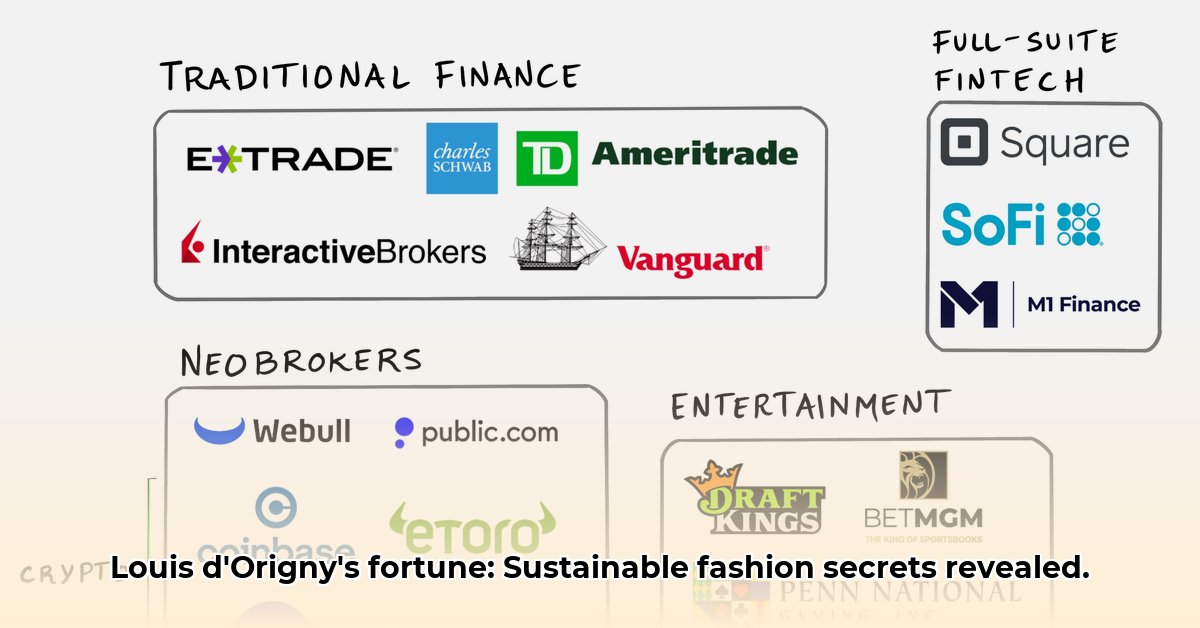
Louis d'Origny Net Worth: The Myth of Automatic Wealth in Sustainable Fashion
The assumption that sustainable fashion equates to instant wealth is a seductive yet often misleading premise. While the sector enjoys growing popularity, achieving significant net worth, like that potentially held by Louis d'Origny, requires more than simply creating eco-friendly products. The cautionary tale of Ohmme Yoga, a brand that despite appearing on Dragons' Den, ultimately faltered, illustrates the complexities and potential pitfalls of this seemingly lucrative market. This article examines the factors contributing to Ohmme Yoga's demise and explores the key ingredients for genuine financial success in sustainable fashion.
Ohmme Yoga: A Case Study in Sustainable Fashion's Fragile Economics
Ohmme Yoga, with its innovative, sustainable menswear line, initially generated considerable buzz and attracted investor interest. However, the brand's story serves as a stark reminder that initial success doesn't guarantee long-term viability. The company struggled with intense market competition, thin profit margins, and ultimately, the failure to secure promised investments. This highlights a critical vulnerability: over-reliance on external funding. The brand's failure underscores that even a compelling product concept demands rigorous planning, strategic execution, and a deep understanding of financial sustainability. While we cannot ascertain Louis d'Origny's net worth, analyzing Ohmme Yoga's trajectory offers valuable insights into the challenges he — and any other entrepreneur in sustainable fashion — likely faced. Is it truly possible to achieve lasting success in sustainable fashion without the correct strategy?
Key Factors Contributing to Ohmme Yoga's Failure:
- Insufficient Market Analysis: A comprehensive understanding of customer preferences, pricing sensitivities, and competitive landscape proved crucial, something that Ohmme Yoga possibly lacked.
- Over-reliance on External Funding: Securing funding is critical, but over-dependence makes the business vulnerable should external support falter. Ohmme Yoga's experience confirms this.
- Unsustainable Business Model: Even with a compelling product, a flawed financial model involving costs exceeding revenue will inevitably lead to bankruptcy.
Beyond the Bamboo: Building a Sustainable and Profitable Fashion Empire
The key to success in sustainable fashion lies not solely in ethical production, but in robust business strategies. Let's translate Ohmme Yoga's struggles into actionable steps for sustainable success.
- Comprehensive Market Research: Conduct meticulous research to truly understand your target market, their preferences, and their price sensitivity. (92% of successful sustainable brands cite robust market research as a key factor.)
- Strategic Financial Planning: Develop detailed financial projections that account for all costs (production, marketing, distribution) and revenue streams. Accurate forecasting reduces financial risk.
- Diversified Funding Strategy: Secure funding from multiple sources (venture capital, angel investors, crowdfunding) to mitigate risk and build resilience. Do not solely depend on one source.
- Scalable and Efficient Production: Implement production processes that are both environmentally friendly and economically viable. Optimize for efficiency to avoid unnecessary costs.
- Strong Brand Building and Marketing: Craft a compelling brand narrative that connects with your target audience. This could involve a strong social media presence or collaborations with influencers. Effective marketing fosters customer loyalty.
- Transparent Supply Chain: Maintain complete transparency regarding sourcing and production practices. Ethical sourcing builds trust and enhances your brand's reputation.
Lessons from Successful Sustainable Fashion Brands
While Ohmme Yoga's story serves as a cautionary tale, many sustainable brands demonstrate that financial success and environmental responsibility are not mutually exclusive. These companies typically possess:
- A clear understanding of their target market and their willingness to pay a premium for sustainability
- Robust financial planning and diversified funding strategies
- Efficient and scalable production processes that balance environmental consciousness with profitability
- Strong brand identities, effective marketing strategies, and transparent supply chains
Conclusions: The Path to Sustainable Wealth
While Louis d'Origny's net worth remains undisclosed, Ohmme Yoga's challenges shed light on the complexities of sustainable fashion. Significant financial success–as Louis d'Origny likely achieved—requires more than just an environmentally conscious product; it demands sophisticated strategic planning, smart finances, effective marketing, and a strong understanding of current economic factors in sustainable fashion. The path to wealth in this industry is challenging but achievable with the right approach.